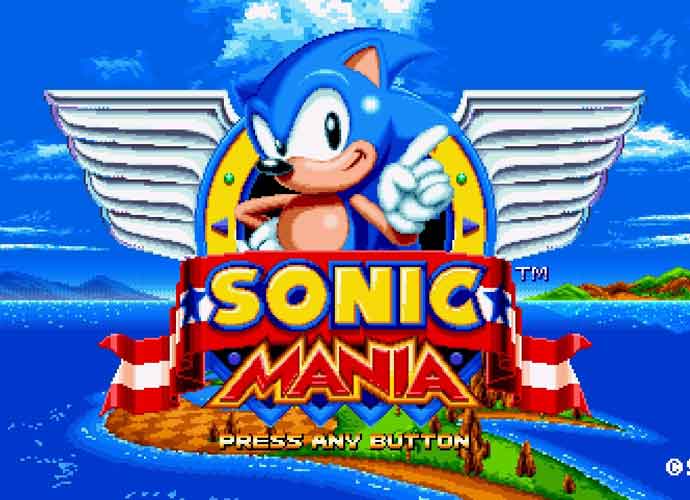‘Sonic Mania’ Game Review: The Sequel We’ve Waited Years For

4.5/5
Sonic the Hedgehog has sustained a celebrated life, starring in a cherished game video game franchise with a plethora of supplemental content. SEGA’s mascot enjoyed his heyday in his earliest years, with the SEGA Genesis trilogy – consisting of Sonic 1, Sonic 2 and the two-part Sonic 3 & Knuckles – along with the SEGA CD’s Sonic CD.
Sonic Team has made several endeavors to translate the brand into 3D with a questionable track record of success. Meanwhile, series contributor Dimps helmed many of the 2D titles developed in the 2000s and beyond, with their first two, Sonic Pocket Adventure and Sonic Advance, leaning towards the Genesis titles for their mechanical inspiration even if they didn’t measure up in quality.
Dimps’ style changed over their tenure with the series, to the point where the majority of their offerings only sketchily resembled the classic lineage. This progression proved egregious to fans when Dimps produced an alleged direct continuation to the classics in Sonic 4: Episode I and Episode II. Similarly, the appeal of the classics seems to elude Sonic Team, as while Classic Sonic was still fun in Generations, it likewise was a mechanically inadequate facsimile of the golden years.
However, in 2011, SEGA began partnering with a fan – Christian “The Taxman” Whitehead – who provided them with an excellent recreation of Sonic CD for consoles and smartphones. Since then, Whitehead was joined by fellow community member Simon “Stealth” Thomley to helm recreations of Sonic 1 and 2 for smartphones, now leading us to a new sequel, Sonic Mania.
Sonic Mania launched recently for the Nintendo Switch, PlayStation 4, Xbox One and PC. The side-scroller is identical across all platforms, although I personally own it on my Switch. So, can Sonic’s classic formula keep up with modern standards or are Sonic’s golden years worse than we remember?
SONIC MANIA GAME REVIEW
Upon first starting the campaign, players are greeted by a reimagining of Sonic 3’s opening cinematic, with Sonic and his sidekick Tails flying along the ocean on their Tornado biplane. They land on Knuckles’ home turf as Dr. Eggman’s elite Eggrobo squad, the Hard-Boiled Heavies, unearth the surreptitious Phantom Ruby. The pink crystal emits energy waves, transforming the Eggrobos into their divergent forms and whisking our three heroes off to Green Hill Zone Act 1, the first level. Our trio travels across all four familiar landmasses from the classic Sonics, sometimes travelling organically, sometimes getting warped around by the Phantom Ruby. Can our beloved trio stop Dr. Eggman from harnessing the gemstone?
Sonic 1 and its immediate sequels are simple, easy to understand games at their cores. They’re controlled with a D-Pad and one button, with the former being used to move your character. The button is most commonly pressed to jump, though other actions may be available depending on which character you’re using; Tails could fly if the jump button was pressed a second time, whereas Knuckles could glide. He could climb, too, if he hit a wall while airborne. Sonic’s had two exclusive abilities, Sonic CD’s Super Peel-Out and Sonic 3 & Knuckles’ Insta-Shield, though both were relegated to unlockable extras here that can only be used in the “No Save” file. Instead, Sonic was gifted a newfangled skill in Mania, which we’ll get to in a bit.
Our heroes’ lives are guarded by the collectable Rings that adorn each stage. Taking damage will knock them out of your character, but he’ll survive. If you get hit without any Rings or a protective Shield, you’re out one life. Most Rings scatter about haphazardly after taking a hit, although some cluster together into a larger Ring that reclaims several of your lost trinkets. Additionally, a repurposed power-up from Knuckles Chaotix, the blue Hyper Ring, coalesces all of your Rings into the larger Rings, making it easier to pick them back up. Collecting 100 Rings will award you another life.
As can be gleamed from Mania’s trailers, it’s a true return to form regarding how the classic titles operated. While the physics aren’t a 1:1 replica, they’re extraordinarily close and follow the same rules. All three playable mammals – Sonic, Tails and Knuckles – gather momentum as they run, with downward slopes increasing their speed. Conversely, upward slopes decrease their pace. Jumping while at the height of a slope can allow for a sizable leap, which is useful for discovering the game’s many hidden surprises. Each character can locate secrets and alternate paths tailored to their skillsets, with Knuckles even scoring an exclusive version of Mirage Saloon’s Act 1 and a few unique bosses.
As per their heyday, all three are gifted with the ability to roll, reducing the player’s control over them while making them invulnerable to most enemies, the Badniks. Managing your momentum to effectively jump and maneuver is satisfying, giving an exhilarating feeling once you’ve mastered a stage and can control your mascot as a nigh unstoppable pinball buzz saw of death. Likewise, the Spin Dash returns from prior titles. If you’re standing still and need a quick burst of speed, holding down and pressing the button will rev up the reliable tool.
Sonic, however, exclusively has the ability to Drop Dash. While midair, holding the button will rev Sonic up. The second he lands on the ground, Sonic will roll off in whichever direction you’re holding. The Drop Dash doesn’t propel Sonic with the same force a Spin Dash would, but it’s nevertheless valuable if you want to keep up your momentum. Moreover, Sonic 3’s three Elemental Shields return, bolstering Sonic with more movement options if he obtains them.
Sonic Mania has the classic series’ fundamental mechanics accounted for, and the multifaceted level design is likewise built around them. All of the 12 standard Zones each have two Acts, generally rivaling Sonic 3 & Knuckles’ levels in density. Every Zone has its own unique level hazards, gimmicks and Badniks; many obstacles and utensils, such as Green Hill’s zip lines, recall previously used devices from prior adventures, whereas others are unprecedented. Returning Zones, which disappointingly account for eight of Mania’s environments, tend to skew closer to their original incarnation in their first Act. The subsequent Act, however, usually changes up the Zone with novel mechanics, some of which even integrate the Elemental Shields. Brand new Zones are given the same level of care. While some Zones shine less than others – the final proper Zone is self-indulgent with its length, for example – there isn’t an outright weak Act in the game, which can’t be said for Mania’s direct precursors. Nevertheless, after quitting a play session, you’ll always have to resume from the first Act in a Zone. While this was fine during Sonic 3‘s time, it’s archaic and inconvenient now.
Moreover, odd-numbered Acts each bear their own miniboss while even-numbered Acts have a traditional boss encounter, usually directly against Eggman as he commandeers a machine. Not every boss is a winner – specifically, Press Garden Zone’s miniboss is rather uninspired – but there’s as much variety in the boss roster as there is between the Zones. A hidden boss can be earned if the player has obtained all seven of the Chaos Emeralds, as per a Sonic tradition. Plus, time trails and a competitive two-player racing mode are included, too.
Chaos Emeralds are procured through the requisite seven Special Stages, which can be entered through the giant Special Rings hidden in each Act. Therein, SEGA Saturn-esque models of Sonic, Tails or Knuckles automatically roam around and try to catch a UFO. Their velocity is marked by one of three speed tiers, and collecting Blue Spheres will increase their swiftness. Netting all seven of the series’ stalwart charms will net your character access to their Super form, blessing them with invincibility, faster movement speeds and higher jumps.
Moreover, if players reach a checkpoint with enough Rings, you’ll be transferred to the Blue Spheres Bonus Stage, where you’re challenged to collect all of the Blue Spheres littered across the rotating world. Collecting all of the titular orbs grants you a silver token, whereas perfecting a stage by also securing all of the Rings bestows a gold medal. These medals unlock bonus features, such as Sonic’s former two signature moves. While I do enjoy Blue Spheres, your average session within it takes a fairly long time for a Bonus Stage, which takes me out of the platforming it interrupted.
Graphically, Sonic Mania’s sprite work channels the Genesis titles, though its more advanced effects and color pallet would be at home on the SEGA Saturn. Every character and Zone has more fluid animations and is decorated with more details than their 16-bit incarnations, and the newcomers to Sonic’s world are equally as realized. There are times when the aesthetics get too busy, but it wasn’t a significant issue and the game looks very vibrant. Furthermore, a charmingly expressive Tyson Hesse-directed opening animation plays when booting up the game.
Tee Lopes composed the majority of Mania’s OST, revising familiar melodies and creating new ones with an energy reminiscent of Sonic CD’s Japanese OST. He did an excellent job on both accounts; remixes are cleanly identifiable from their source while adding in new twists, while the new themes fit right into the series’ discography. Following the level design ethos, every Act 2 theme heavily alters the melody in interesting ways. A couple of tracks in the game were composed by Hyper Potions, both of which also convey liveliness. Finally, this review would be remiss if it neglected to mention the Easter eggs and references to the greater Sonic franchise and even other SEGA properties that Mania sneaks in. I won’t spoil any, but you can tell passionate fans developed this entry.
Sonic, as I once mentioned, is largely characterized by its namesake speed. Nevertheless, the classics offered more than that, and Sonic Mania recaptures that magic while expanding upon it in inventive ways. My biggest issue with the game is how its Zone lineup could stand to use another brand-new location or two, but I’m hopeful a sequel will fulfill that need. While I need some time for me to properly assess where Mania rests in my top ten Sonic game list, it is without question one of the best games in the franchise. And, honestly, I predict Sonic Mania will be my game of the year.
RELATED ARTICLES
Get the most-revealing celebrity conversations with the uInterview podcast!






Leave a comment